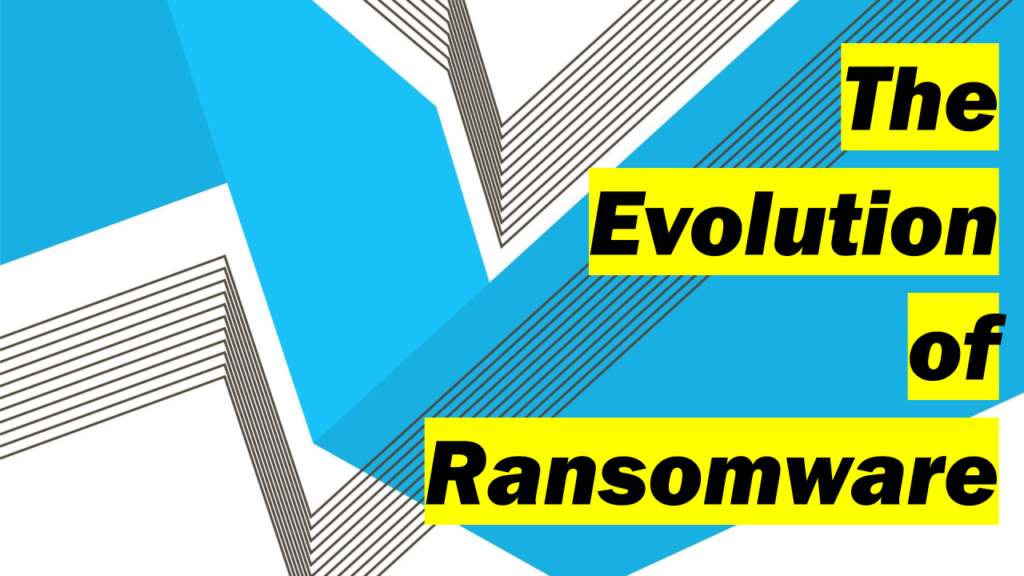
Ransomware has rapidly evolved from a relatively simple form of cyber extortion to one of the most pervasive and damaging threats to businesses worldwide. As ransomware tactics grow more sophisticated, it’s essential for companies to understand the latest trends and take proactive measures to protect themselves. This article examines the evolution of ransomware, highlights key trends, and provides case studies along with strategies for businesses to stay protected.
The Evolution of Ransomware
Ransomware has undergone significant transformation since its early days. Initially, ransomware attacks involved encrypting a victim’s data and demanding payment in exchange for a decryption key. However, modern ransomware has become far more complex, with attackers employing advanced tactics such as double extortion, where they steal data before encrypting it, and threaten to leak it if the ransom isn’t paid.
Key Trends in Ransomware
1. Double and Triple Extortion
In double extortion, attackers not only encrypt the data but also exfiltrate it, threatening to release it publicly if the ransom is not paid. Triple extortion adds another layer by targeting third parties related to the initial victim, such as customers or partners, demanding additional payments to prevent data leaks.
2. Ransomware-as-a-Service (RaaS)
Ransomware has become more accessible to cybercriminals through Ransomware-as-a-Service (RaaS) models, where experienced hackers provide ransomware tools to affiliates in exchange for a share of the profits. This has led to an increase in the number and diversity of ransomware attacks, as even low-skilled attackers can launch sophisticated campaigns.
3. Targeting Critical Infrastructure
Ransomware attackers are increasingly targeting critical infrastructure sectors such as healthcare, energy, and transportation. These sectors are often more likely to pay ransoms due to the potentially catastrophic consequences of prolonged downtime.
4. Cryptocurrency’s Role
Cryptocurrencies like Bitcoin have facilitated the rise of ransomware by providing attackers with a relatively anonymous method for receiving payments. However, the increasing scrutiny of cryptocurrency transactions by governments and law enforcement is leading to changes in how ransoms are demanded and paid.
Case Studies
Case Study 1: Colonial Pipeline Attack (2021)
Background: In May 2021, Colonial Pipeline, one of the largest fuel pipelines in the U.S., was hit by a ransomware attack carried out by the DarkSide group. The attack forced the company to shut down its operations, leading to widespread fuel shortages across the East Coast.
Impact:
- Operational Disruption: The pipeline was offline for several days, causing significant economic and logistical disruptions.
- Ransom Payment: Colonial Pipeline paid a $4.4 million ransom, although a portion of this was later recovered by the FBI.
- Regulatory Response: The attack led to increased scrutiny of cybersecurity practices in critical infrastructure and prompted the U.S. government to issue new cybersecurity guidelines.
Lessons Learned:
- Importance of Incident Response Plans: The incident highlighted the need for robust incident response plans that include contingencies for ransomware attacks.
- Critical Infrastructure Vulnerability: The attack underscored the vulnerability of critical infrastructure to cyber threats and the importance of securing these assets.
Case Study 2: JBS Foods Attack (2021)
Background: JBS Foods, the world’s largest meat processing company, was hit by a ransomware attack in June 2021. The attack, attributed to the REvil ransomware group, disrupted operations in several countries, including the U.S., Australia, and Canada.
Impact:
- Supply Chain Disruption: The attack led to the temporary shutdown of multiple processing plants, affecting meat supplies and prices globally.
- Ransom Payment: JBS paid an $11 million ransom to regain access to its systems and prevent further disruptions.
- Industry Awareness: The attack raised awareness about the risks of ransomware to global food supply chains.
Lessons Learned:
- Supply Chain Security: The attack highlighted the need for comprehensive cybersecurity measures across supply chains, particularly in industries critical to everyday life.
- Ransom Payment Dilemmas: The decision to pay the ransom sparked debate about the ethics and long-term consequences of complying with cybercriminals’ demands.
How Businesses Can Stay Protected
1. Implement Multi-Layered Security
Adopt a multi-layered approach to security, including firewalls, intrusion detection systems, and antivirus software. Regularly update these systems to protect against the latest threats.
2. Regular Data Backups
Regularly back up critical data and ensure that backups are stored offline or in a secure, isolated environment. This can help businesses recover their data without paying a ransom.
3. Employee Training and Awareness
Educate employees on the risks of ransomware and the importance of following security best practices, such as recognizing phishing emails and avoiding suspicious links or attachments.
4. Zero Trust Architecture
Implement a Zero Trust security model, where no user or device is trusted by default, even if they are inside the corporate network. This helps to minimize the risk of lateral movement by attackers.
5. Incident Response Planning
Develop and regularly update an incident response plan that includes specific steps for dealing with ransomware attacks. Ensure that all employees are familiar with the plan and conduct regular drills.
6. Partner with Cybersecurity Experts
Consider partnering with cybersecurity firms that specialize in ransomware prevention and response. These experts can provide advanced threat detection and response capabilities that may not be available in-house.
Conclusion
Ransomware continues to evolve, posing significant threats to businesses across all industries. The shift towards more sophisticated attack methods, such as double extortion and RaaS, requires businesses to stay vigilant and proactive in their cybersecurity efforts. By learning from high-profile cases like those of Colonial Pipeline and JBS Foods, companies can better understand the risks and implement strategies to protect themselves against future ransomware attacks.
#Ransomware #CyberSecurity #DataProtection #CriticalInfrastructure #SupplyChainSecurity #CyberThreats #InfoSec #IncidentResponse #ZeroTrust #TechTrends